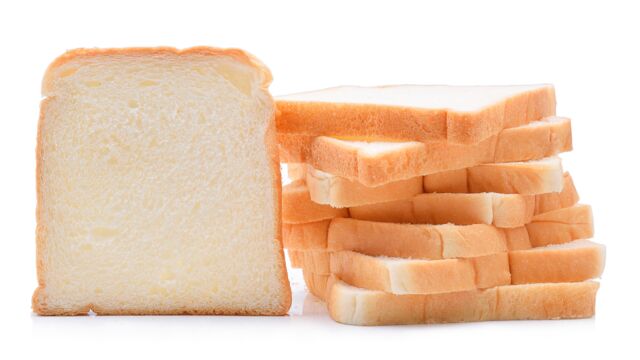A Baker Reveals the Awful Ingredients of Industrial White Bread

A baker explained how industrial bread is made. What's on the menu? Fat, sugar and air. Read on to find out more.
Industrial white bread is very convenient. It can be kept for a long time and goes well with our sandwiches and snack recipes, all for a very competitive price. However, the composition of this product remains very poor in terms of nutrition.
Discover our latest podcast
A baker explained the composition of white bread
During a program broadcast on French channel France 5 on January 19th, 2019, baker Christophe Vasseur explained how industrial white bread is produced, and the result is not very positive.
More under this adMore under this adWhile we would expect to find wholemeal flour, yeast, water and salt, the reality is in fact far from this. What's on the menu? Fat, sugar, powdered milk and lots of yeast.
Fake fat, fake sugar, fake milk, poor quality flour; ingredients that from a nutritional point of view are worthless, but which have the only advantage of being presented as cheap and practical.
More under this adMore under this adAccording to Christophe Vasseur, manufacturers do not hesitate to use low-end products to save on production costs. Instead of milk, we have powdered milk. Instead of sugar, we have glucose syrup. Salt is also used in large quantities to give taste to the finished product. This is scary!
'Not milk, but milk powder, water, lots of salt, because it doesn't have much taste, it doesn't even have any taste at all, so we're going to use a lot more salt, sugar, but not real sugar because it's very expensive, so what do we use? The famous glucose syrup. It has no taste, but it has a great sweetening power so it will mask the absence of flavour.'
More under this adMore under this adExpensive air
When you compare a baker's loaf of bread with an industrial loaf of bread, the conclusion is clear: a baker's loaf of bread is small and expensive, whereas a supermarket loaf of bread is big, soft and costs no more than £2.
However, when Christophe Vasseur compares the weight of the two loaves of bread, the difference is surprising. The sandwich loaf produced in a bakery weighs 380 g, while the other weighs 285 g. This difference can be explained by the fact that manufacturers use yeast in large quantities to make the bread thicken.
More under this adMore under this ad'We don't forget the yeast, but in industrial quantities. More yeast gives more volume, traps more air.'
This artificial volume is, therefore, misleading for the consumer, who ends up buying a product that is very poor in terms of nutrition and inflated with yeast.
The best thing to do is to consume a baker's loaf of bread that will be better and cheaper or to make bread at home.